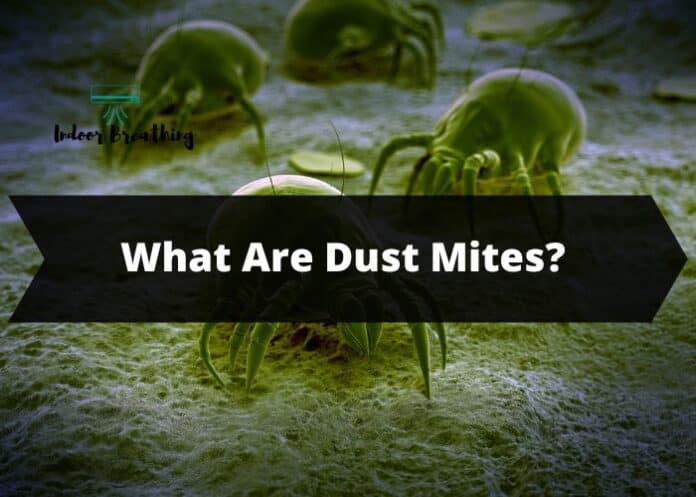Dust mites are everywhere. They live their whole lives in the tiny homes we’ve tried so hard to evict them — our pillows, sofas, beds, and carpets. When their population gets out of hand, you can suffer from dangerous allergies like asthma.
This article will look at where dust mites originated, how they harm humans and the environment, and, most importantly, how to get rid of them!
Dust mites are one of the most prevalent allergies and asthma triggers found in the house. Despite their resemblance to little bugs, do not leave bites on your skin. However, they can cause skin rashes.
Dust mites do not bite humans. They also do not live on humans; however, they may creep into your clothing from time to time.
Table of Contents
What Are Dust Mites?
Because of their small size, dust mites can be difficult to detect. These tiny arthropods are just about 1/4 to 1/3 millimeters long. As a result, they are only visible under a microscope, and even then, they resemble microscopic white spider-like organisms.
Male dust mites can survive for more than a month, and female dust mites can live for up to 90 days. Dust mites feed on dead skin cells, which is why they are so common in people’s houses. On a typical day, one person may lose 1.5 grams of dead skin cells, which can feed up to one million dust mites.
Additionally, dust mites can be found worldwide, although they prefer hot and humid regions. Because they can burrow deep into cloth fibers, they can accompany you when you relocate, go on holiday, or do business. These are allergenic, which means they can cause allergies. They also leave behind skin and feces, which can cause allergies.
What Do Dust Mites Eat?
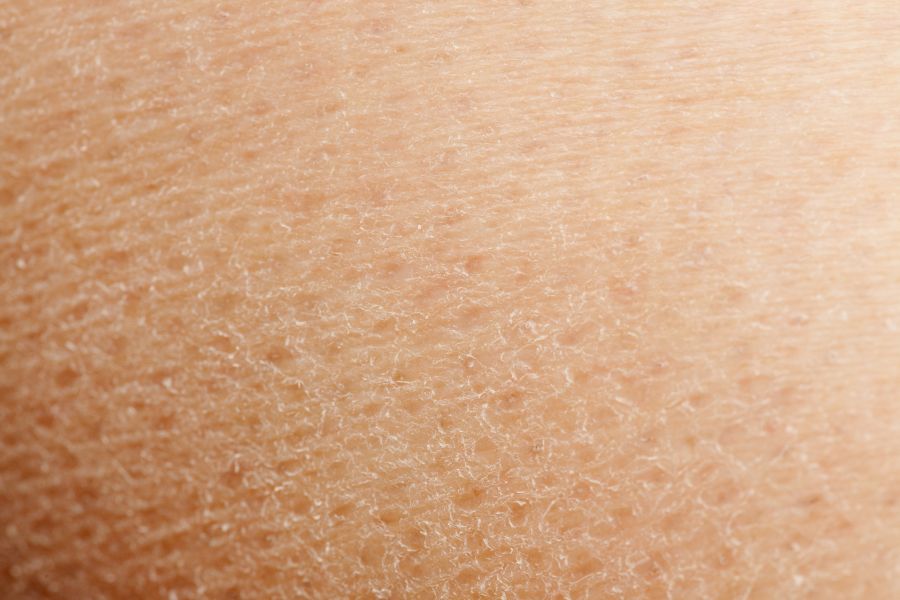
Dust mites consume dust and dead skin flakes excreted by people and animals. They eat pollen outside as well.
Yeasts and microbes, the typical flora associated with healthy human skin, call a recently departed skin scale “home.” However, these resident organisms die out and are replaced by a variety of opportunistic fungi, molds, and yeasts known to thrive on decomposing organic debris.
The skin scale is composed of stiff fibers (keratin) that are difficult for mites to break down. However, we know that researchers discovered fragments of partially digested skin scales in mite droppings. Perhaps the mite uses the skin scales as an edible plate full of food.
Can Humans Get Dust Mites?
People can get dust mites by inhaling or touching something that has been in contact with them. Dust mites do not bite humans, and they do not spread diseases. However, they cause allergies which can cause discomfort to those who are sensitive to them.
People who are allergic to dust mites develop symptoms when inhaling these tiny insects—some react strongly enough that they need medical attention. The most common symptoms include sneezing, coughing, itchy eyes, and throat irritation (which leads to a runny nose).
What Are the Signs Of Dust Mites?
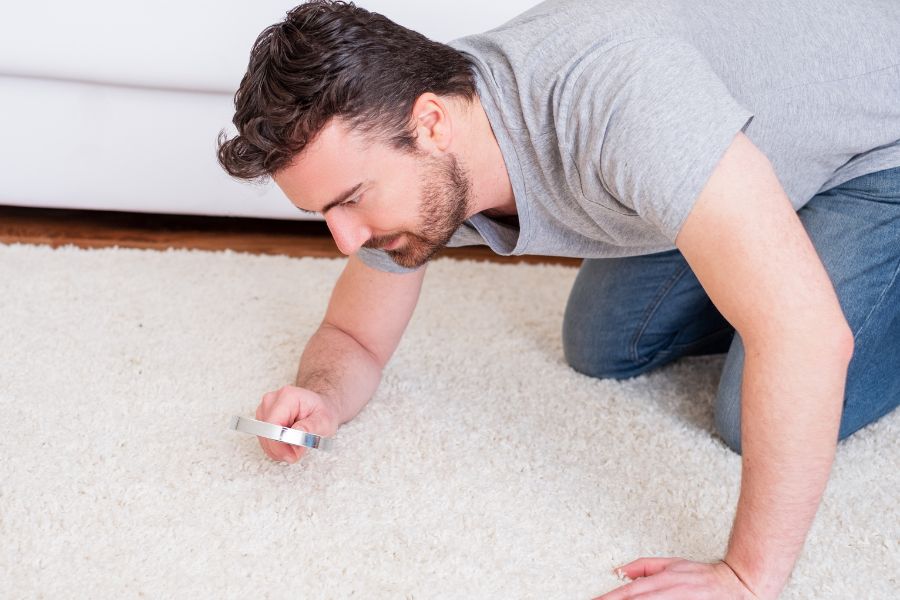
Allergies are the only way to determine if you have dust mites in your home. The existence of dust mites in your home can cause red rashes on your skin, a running nose, sneezing, throat pain, burning, and watery eyes. Dust mites also trigger asthmatic patients.
So, if your house is usually spotless and you have recurring allergic reactions, chances are you have dust mites.
House dust mites can cause respiratory and dermatological problems such as asthma and eczema. Among the symptoms are:
- Wheezing
- Coughing
- Breathlessness
- A Tightness In The Chest
- Nosebleed
- Nose Itch
- Itchy, Watery Eyes
- Itchy Skin
- Skin Rashes
How Do I Test My House For Dust Mites?
Dust mites are found in all homes and are impossible to eliminate. However, utilizing a home testing kit may determine if you have dust mites.
Using a Home Dust Mite Test Kit
Step 1. Purchase A Dust-Mite Test Kit For Your House
A testing kit can be purchased online. Some testing kits necessitate collecting a sample and sending it to a lab for analysis. Some kits enable you to test a sample at home with a solution on a test strip. Line indicators on the test strip show the amounts of allergens in your home.
Step 2. Connect The Dust Collection To The Vacuum Hose
Use the adapter included with the testing kit if the collector does not fit on the hose. You can connect the adapter to the hose and the collector to the adapter.
Step 3. Add The Testing Liquid, Shake It Up, And Set It Aside For 4 Minutes
Dust mite testing kits include a solution for testing that is poured directly into the dust collector with the filter inside. To identify mites, the answer is mixed with dust.
Step 4. 5 Drops Should Be Applied To The Sample Well On The Test Strip
Suction some of the solution and dust from the collector with the dropper in the test kit. The test strip should produce findings in 10 minutes.
Can You Feel Dust Mites Crawling?
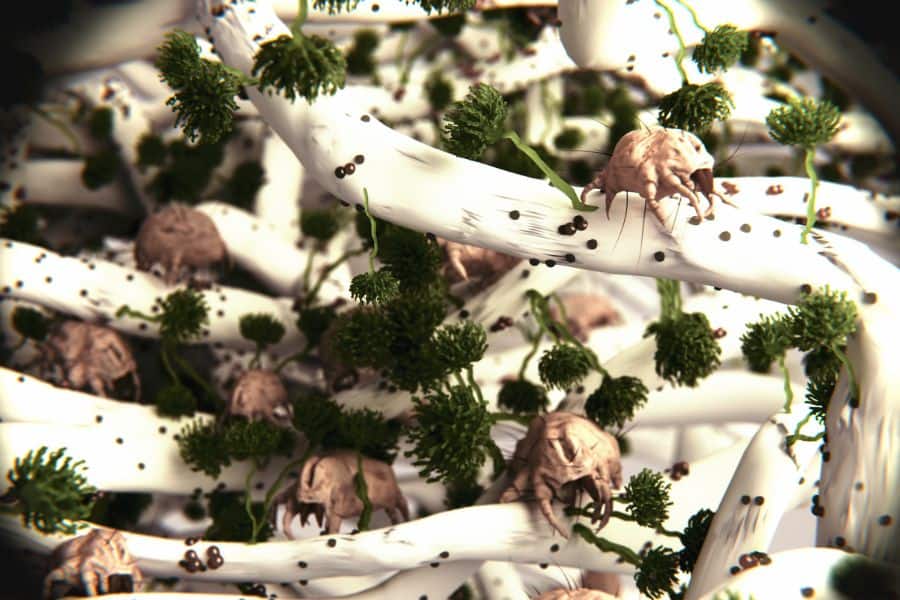
Many people feel uneasy that insects, mites, or other minute arthropods are biting, crawling on, or burrowing in their skin. Unfortunately, the causes of these experiences are frequently unknown, and no little organism can be trapped for study.
However, if their host dies or leaves the nest, they may bite humans. You may feel a little sting when they bite and then notice agony. In addition, if you are allergic to dust mites, you will develop a red, itchy bump on your skin where the dust mite extract was poked. Itching and redness are the most prevalent side effects of these skin tests.
How Do You Eliminate Dust Mites?
There are several successful strategies for lowering the number of dust mites, and it frequently comes down to killing the mites and reducing their primary food source: household dust.
Reduce The Temperature In Your Home
Lowering the temperature in your home and reducing humidity with dehumidifiers and other technologies can increase your chances of having lower levels of dust mites. Set your indoor temperature to 70 degrees Fahrenheit, which is ideal for most people. You can live with fewer dust mites if you accept a few degrees cooler.
Clean Dust Regularly
Dust mites’ primary food source is dust, so removing their food source will drastically reduce the infestation. First, examine your home for spots where dust accumulates, then wipe these areas off with a moist cloth or a microfiber duster.
Wash Your Clothes In Hot Water
Washing your bedding at temperatures around 135 degrees kills many dust mites while eliminating dust from the linen. If any mites survive the wash, a hot dryer should kill them. If you want to keep dust mites at bay, launder your linens in this manner at least once a week.
Freeze the Mites
Extreme cold is just as likely as extreme heat to kill dust mites. Fill a zipped bag with your children’s favorite toys. Place them in the freezer overnight (or throughout the day if it’s for your child’s sleep comfort) to kill many, if not all, of the dust mites on that item. Freeze your child’s toy for 24 hours for the most outstanding results.
Use an Air Purifier
Air purifiers will suck dirty air, including dust mites, and trap them in filters. Then it blows back into air fresh air.
What Kills Dust Mites Naturally?

The best way to control dust mite allergies is to avoid exposure. While it is impossible to eliminate dust mites from your house entirely, you can dramatically lower their population.
Here’s how it’s done:
Use Allergen-Resistant Bed Coverings
Use dustproof or allergen-blocking coverings on your mattress and pillows. These densely woven fabric covers keep dust mites from colonizing or fleeing from the bed or pillows—box springs with allergen-resistant blankets.
Wash Bedding Once A Week
To kill dust mites and remove allergies, wash all sheets, blankets, pillowcases, and bedcovers in hot water at least 130 degrees Fahrenheit (54.4 degrees Celsius). If the bedding cannot be cleaned hot, dry it for at least 15 minutes at a temperature above 130 F (54.4 C).
Maintain A Low Humidity Level
Maintain a relative humidity level of less than 50% in your home. Humidity can be reduced with a dehumidifier, and it is recommended to use a hygrometer to detect humidity inside the house.
Vacuum Frequently
Vacuuming carpeting and upholstered furniture eliminate surface dust, but it does not remove most dust mites or dust mite allergies. To reduce house dust emissions, use a vacuum cleaner with a double-layered microfilter bag or a high-efficiency particulate air (HEPA) filter.
Remove Carpeting And Other Dust Mite Breeding Grounds
Carpeting supplies dust mites with a haven. This is especially true if the carpet is installed on concrete, rapidly absorbing moisture and providing a humid environment for mites. If practicable, replace wall-to-wall carpeting in bedrooms with tile, wood, linoleum, or vinyl flooring.
People Also Ask
Do dust mites live in pillows?
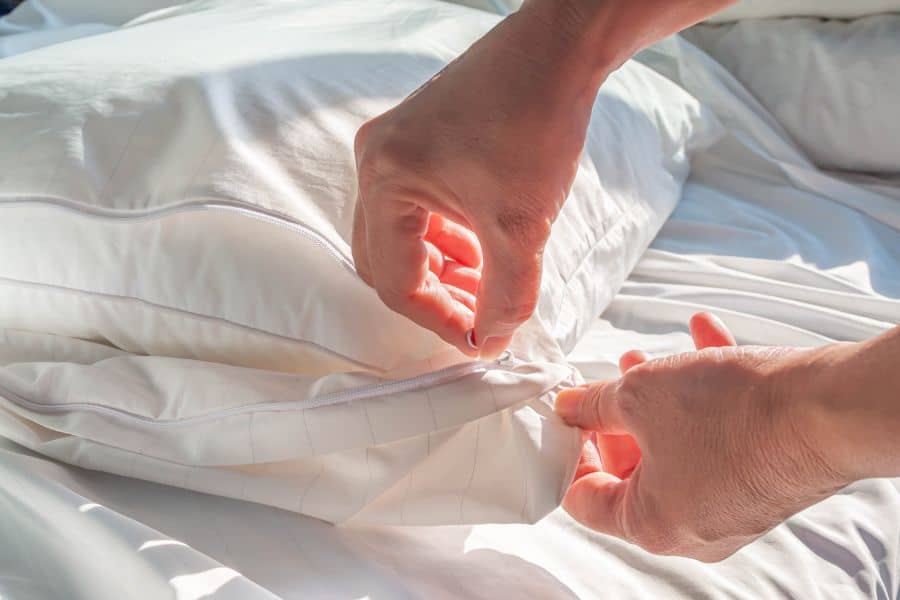
Dust mites can live in all pillows, including feather, down, microfiber, and polyester foam. An average worn mattress could have anything from 100,000 to 10 million mites. Dead mites and their droppings can account for 10% of the weight of a two-year-old cushion.
Do dust mites bite in bed?
Unfortunately, the bed is a favorite haunt of dust mites. Thus it is the one spot where patients are most vulnerable.
Does every house have dust mites?
Dust mites can reside in your home’s bedding, mattresses, upholstered furniture, carpets, and drapes. It can be found almost anywhere; approximately four out of every five houses in the United States have detectable amounts of dust mite allergen in at least one bed.

